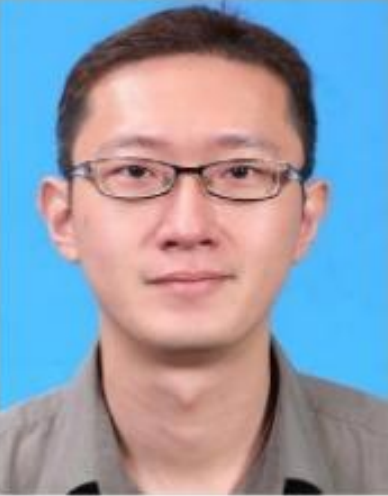Road accidents are increasing every year in Malaysia, and it is always challenging to collect reliable pre-crash data in the transportation community. Existing studies relied on simulators, police crash reports, questionnaires, and surveys to study Malaysia’s drivers’ behaviour. Researchers previously criticized such methods for being biased and unreliable. To fill in the literature gap, this study presents the first naturalistic driving study in Malaysia. Thirty drivers were recruited to drive an instrumented vehicle for 750 kilometres while collecting continuous driving data. The data acquisition system consists of various sensors such as OBDII, lidar, ultrasonic sensors, IMUs, and GPS. Irrelevant data were filtered, and experts helped identify safety criteria regarding multiple driving metrics such as maximum acceptable speed limits, safe accelerations, safe decelerations, acceptable distances to vehicles ahead, and safe steering behaviour. These thresholds were used to investigate the influence of social and cultural factors on driving in Malaysia. The findings show statistically significant differences between drivers based on gender, age, and cultural background. There are also significant differences in the results for those who drove on weekends rather than weekdays. The study presents several recommendations to various public and governmental sectors to help prevent future accidents and improve traffic safety.

KEynote Speakers
Keynote Speaker 1

Prof. Chuan-Ming Liu
National Taipei University of Technology (NTUT), Taiwan, China
Bio: Dr. Chuan-Ming Liu is a professor in the Department of Computer Science and Information Engineering (CSIE), National Taipei University of Technology (Taipei Tech), Taiwan, China, where he was the Department Chair from 2013-2017 as well as the Head of the Extension Education Center at the same school from 2018-2021. Dr. Liu received his Ph.D. in Computer Science from Purdue University in 2002 and joined the CSIE Department in Taipei Tech in the spring of 2003. In 2010 and 2011, he has held visiting appointments with Auburn University, Auburn, AL, USA, and the Beijing Institute of Technology, Beijing, China. He has services in many journals, conferences and societies as well as published more than 120 papers in many prestigious journals and international conferences. Dr. Liu was the co-recipients of many best paper awards, including ICUFN 2015, ICS 2016, MC 2017, WOCC 2018, MC 2019, MC 2021, and WOCC 2021. His current research interests include big data management and processing, uncertain data management, data science, spatial data processing, data streams, ad-hoc and sensor networks, location-based services.
Speech Title: Learned Indices for Spatial Data
Abstract: An index is a structure or organization on data for effectively managing data item in terms of time and space, such as hash tables, binary search trees, and B-trees. As the properties and types of data change over time, new appropriate indices for efficient management on data become more and more important and necessary. On the other hand, as the techniques of machine learning or deep learning advance, one can see many applications using machine learning for a better performance. Recall the idea and objective of index. The index is a model in machine learning, which can locate the data item by prediction. With this observation, learned index has been proposed and is a model that considers the patterns and distributions of data to facilitate search processing. Some learned indices have been proposed for one-dimensional data, including Range Index and Recursive Model Index (RMI). For multi-dimensional (or spatial) data, it is always a challenging work to have effective index structures. Some well-known spatial indices like kd-trees, quad-trees, and R-trees. Their variants for improvement on the efficiency have been studied till now. It thus is interesting and worthy to study the learned indices on spatial (multi-dimensional) data for a better performance. In this talk, the learned indices will be introduced starting with the ones for one-dimensional data. We then focus on the learned indices for spatial data and present our learned indices based on quad-trees and R-trees. With the learned indices as models, evaluation on preprocessing, training, prediction, error, as well as query processing for point, range and kNN queries will be addressed as well.
Keynote Speaker 2

Assoc. Prof. Pavel Loskot, IEEE Senior Member
Zhejiang University-University of Illinois at Urbana-Champaign Institute (ZJUI), China
Bio: Pavel Loskot joined the ZJU-UIUC Institute in January 2021 as the Associate Professor after being nearly 14 years with Swansea University in the UK. He received his PhD degree in Wireless Communications from the University of Alberta in Canada, and the MSc and BSc degrees in Radioelectronics and Biomedical Electronics, respectively, from the Czech Technical University of Prague in the Czech Republic. He is the Senior Member of the IEEE, Fellow of the Higher Education Academy in the UK, and the Recognized Research Supervisor of the UK Council for Graduate Education. His current research interest focuses on problems involving statistical signal processing and importing methods from Telecommunication Engineering and Computer Science to other disciplines in order to improve the efficiency and the information power of system modeling and analysis.
Speech Title: Algorithmic Problems in Computational Molecular Biology
Abstract: The living organisms are extremely complex systems of very large numbers of interacting components across many spatio-temporal scales. These interactions involve chemical reactions, electromagnetic and mechanical forces, and even quantum phenomena. At the same time, the rapidly evolving methods for observing biological systems even at a single-molecule level yield huge amounts of data for studying the biological processes by computational methods. In this talk, I will define the fundamental genetic dogma describing interactions between genotype, phenotype and the environment, i.e., how genetic information is used within biological systems to allow their adaptation and survival. More importantly, I will outline how these fundamental problems are now described algorithmically, so they can be effectively explored by large-scale machine learning models.
Keynote Speaker 3

Assoc. Prof. Por Lip Yee
University of Malaya, Malaysia
Bio: Lip Yee received his Ph.D. from University of Malaya, Malaysia under the supervision of Prof. Abdullah bin Gani in 2012. Currently, he is an Assoc. Professor at the Department of System and Computer Technology, Faculty of Computer Science and Information Technology, University of Malaya, Malaysia. He is also a senior member of IEEE. Lip Yee and his team were the first few pioneers who received IRPA, E-Science, FRGS, ERGS, PRGS, HIR and IIRG grants. He was the first person who managed to secure 2 E-Science funds with the role of PI in 2008. He was also the first person at the FCSIT who managed to secure the PRGS and ERGS grants. Beside collaborators from Malaysia, Lip Yee also has international collaborators from France, UK New Zealand, Turkey, Thailand and China. He also established his connection with his national and international collaborators with some industrial partners in Malaysia and other countries.
Speech Title: Driver Profiling in Malaysia
Keynote Speaker 4

Assoc. Prof. Rajamohan Parthasarathy
SEGI University, Malaysia
Bio: ASSO. PROF. TS. DR. P. RAJAMOHAN received his Bachelor of Science Degree (B.Sc) in Physics later he obtained his Post Graduate Diploma in Computer Applications (PGDCA), Master Degree in Computer Applications (MCA), Master of Technology in Computer Science Engineering (MTech), Doctoral in Philosophy (PhD) in Computer Science, Chartered Engineer (C.Eng.) Title Received from Institution of Engineers India (IEI) and the Fellowship Member from The Institution of Electronics and Telecommunication Engineers (FIETE), India, his area of research in Computer Networks and Security, Artificial Intelligence, IoT & IR 4.0. His Primary Research Interest in Virtual Private Network Implementation for Efficient Data Communication and Wireless Networks Communications and More Towards to Networks Security Especially in Ethical Hacking and Cybersecurity, Cybersecurity with AI, Cloud Computing Security, IoT & IR 4.0. He has obtained Professional Certifications related to Computer Networks and Security areas from Cisco Systems Academic (Networks) and EC-Council (Ethical Hacking). He is a member of the Institution of Engineers India as an Associate Member (AMIE), Graduate Technologist & Professional Technologist in Malaysia Board of Technologists (MBOT), and Senior Member in Asia Society of Researchers (ASR) Hong Kong. He mostly serves as a supervisor and guide to research scholars pursuing master's and doctoral degrees through the research mode. He has published 57 research articles in reputable international journals, and he has attended 15 international conferences. He is also now contributing as an editor/reviewer in eight international journals with high impact factors. Dr. P. Rajamohan has 27 years of academic experiences and two years of Industrial experiences, and he is currently working as an Associate Professor and Lead Coordinator for the Centre for Networks Security & IoT, Faculty of Engineering, Built Environment and Information Technology, SEGi University, Malaysia.
Speech Title: Machine Learning Algorithms and Deep Learning Techniques for Emerging Artificial Intelligence Technologies in Image Processing
Abstract: Machine learning is a subset of artificial intelligence that enables machines to learn from data without being programmed, whereas artificial intelligence is the idea of building intelligent technologies that stimulate human behaviour. Artificial intelligence is used in machine learning, which uses algorithms and data to assess information automatically and make decisions without human input. Neural networks, random forests, decision trees, genetic algorithms, radial basis functions, and sigmoid are a few examples of machine learning algorithms. Machine learning has now permeated every aspect of modern life. For many years, image processing has been a key area of research with both commercial and academic applications in fields including engineering, medicine, biology, and astronomy. Since several ML algorithms were first developed, they have been updated and improved, including those built on Python and Matlab. The recent developments in digital technology, it is inevitable that machine learning and image processing will work together to help resolve complex problems. Deep learning networks are used by several machine learning image processing approaches today. These frameworks are a specific kind that imitate how the human brain learns from data and builds models. Convolutional Neural Networks, often known as CNNs, are a well-known neural network architecture that has made substantial advancements in image data. CNNs are used on images with various image processing tasks to create cutting-edge models.
Updating*